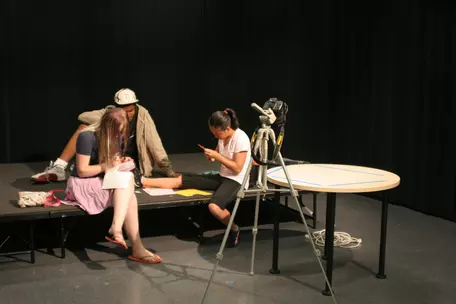Bring Student Media Production Into Your Courses
Jump Down To: Media Production Basics | Science and Media Resources

Animations
Created using paper cut-outs or clay, or drawn on whiteboards, animation can provide an effective means to convey abstract scientific concepts and dynamic systems. Here, minimal class time and resources are necessary. The production and post-production component of the project can be completed within 3-4 hours and only a still camera and tripod are needed.
Public Service Announcements (PSAs)
PSAs are short (typically one minute) pieces delivering a message to raise awareness about an issue that is in the public's interest and to influence or change attitudes and behavior. This format is especially appropriate for a cross-disciplinary course in climate change, in which the relationship between climate change science and broader society is a recurring theme. These projects require significant time commitments (~3 full days) in which team members work together, which may be a barrier to implementing them in a typical one-hour class period format.
Video 'Mash-ups'
For mash-ups, students research a climate change science topic in the primary literature, write a narration, and use existing visuals and media resources to create a 4-5 minute media piece that explains their topic. This assignment can be done with minimal use of in-class time. It does not include shooting film, so the only resources needed are computers and editing software, although a microphone and audio editing software can be helpful.
Person on the Street (POS) Interview
A POS video documents unrehearsed interviews with multiple persons-on-the-street about a specific question or issue in climate science. To produce a compelling product, students need to both understand the underlying science themselves, and be able to conduct and document a series of interviews to elicit interviewees' understanding of the science as well. This project requires mastering good interviewing, visual and audio recording skills, and thoughtful editing to make a point, and requires a time commitment of up to 1 full day.
Visual Story-Telling
A visual story-telling product is an in-camera edited sequence of images that tells a story or explains a climate science concept without using words. To produce an effective message, students need to pay close attention to each image and the sequence of images strung together so that the story they wish to tell is evident without the benefit of verbal explication. It is a good first media project for students new to using media in their science communication, as sound recording and sound and image editing are not necessary.
Media Production Basics

- pre-production, or planning and research;
- production, where media assets and resources are created (i.e., film is shot) and/or gathered;
- post-production, where media assets are integrated, synthesized, assembled, and edited into a single coherent informative and aesthetic piece of communication.
These three components are common to all media projects, regardless of the genre or content.
Science and Media Resources
If you are looking for good quality, accessible science and media production resources, these two pages can provide a helpful starting place for exploration.
